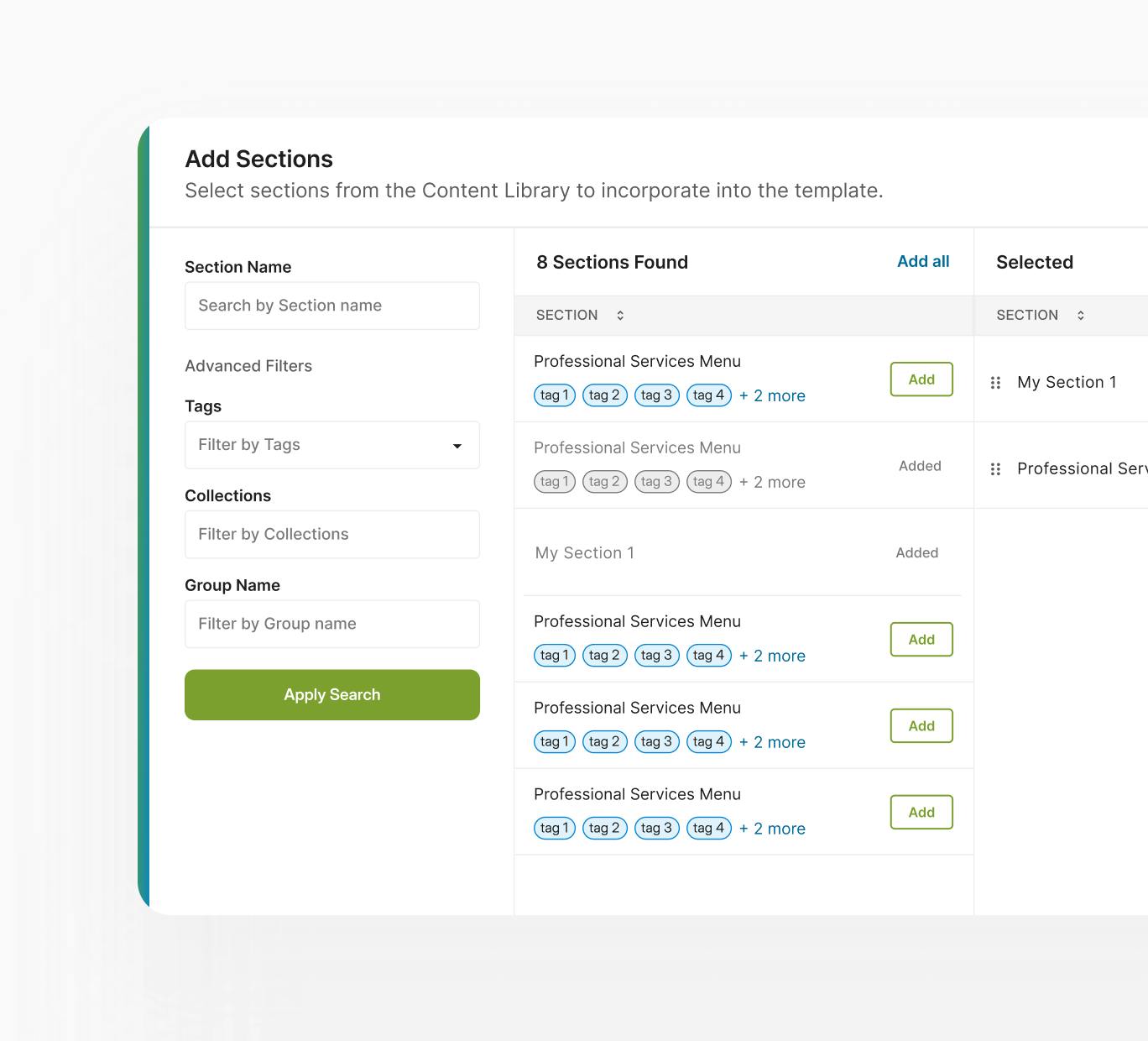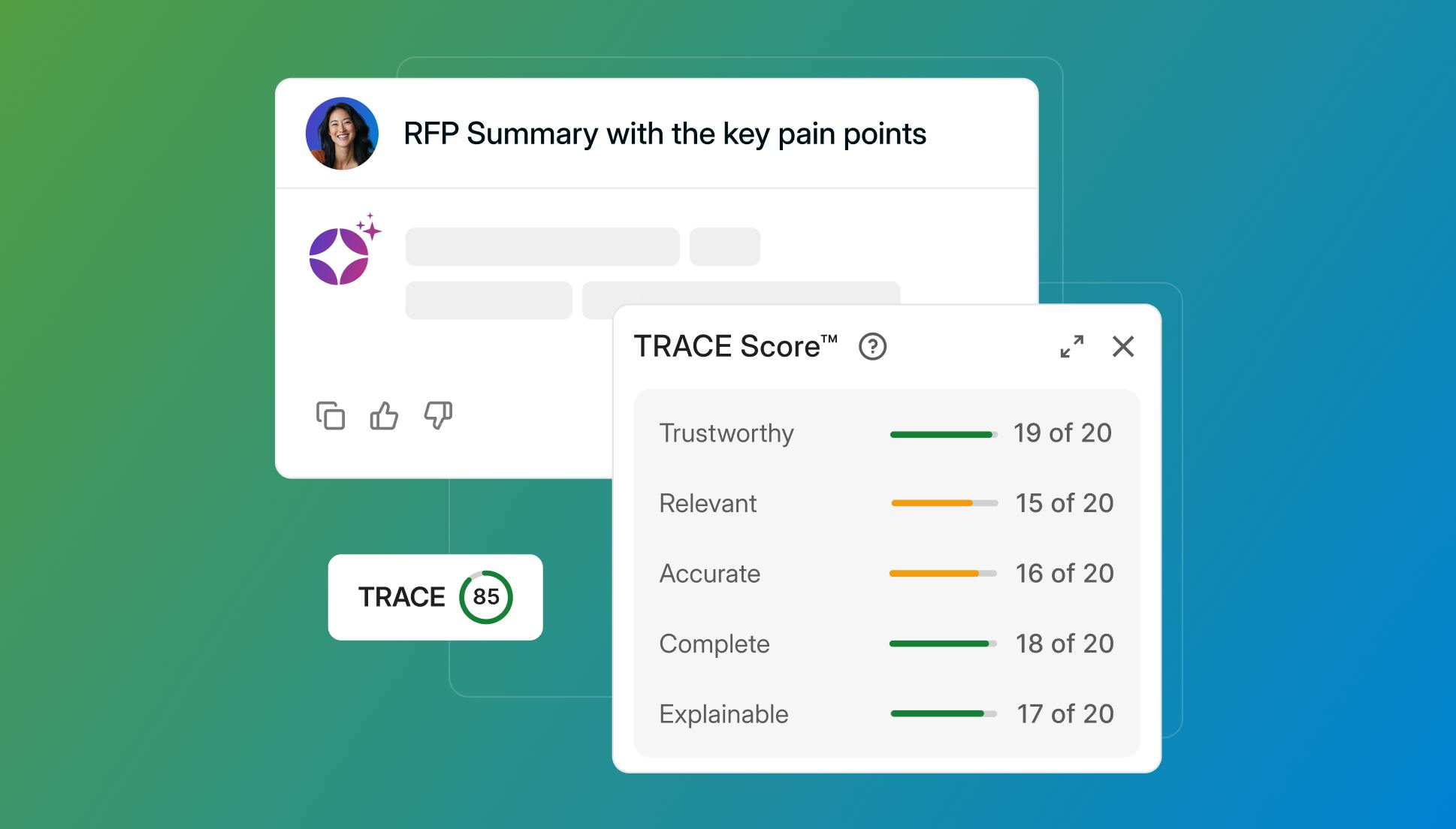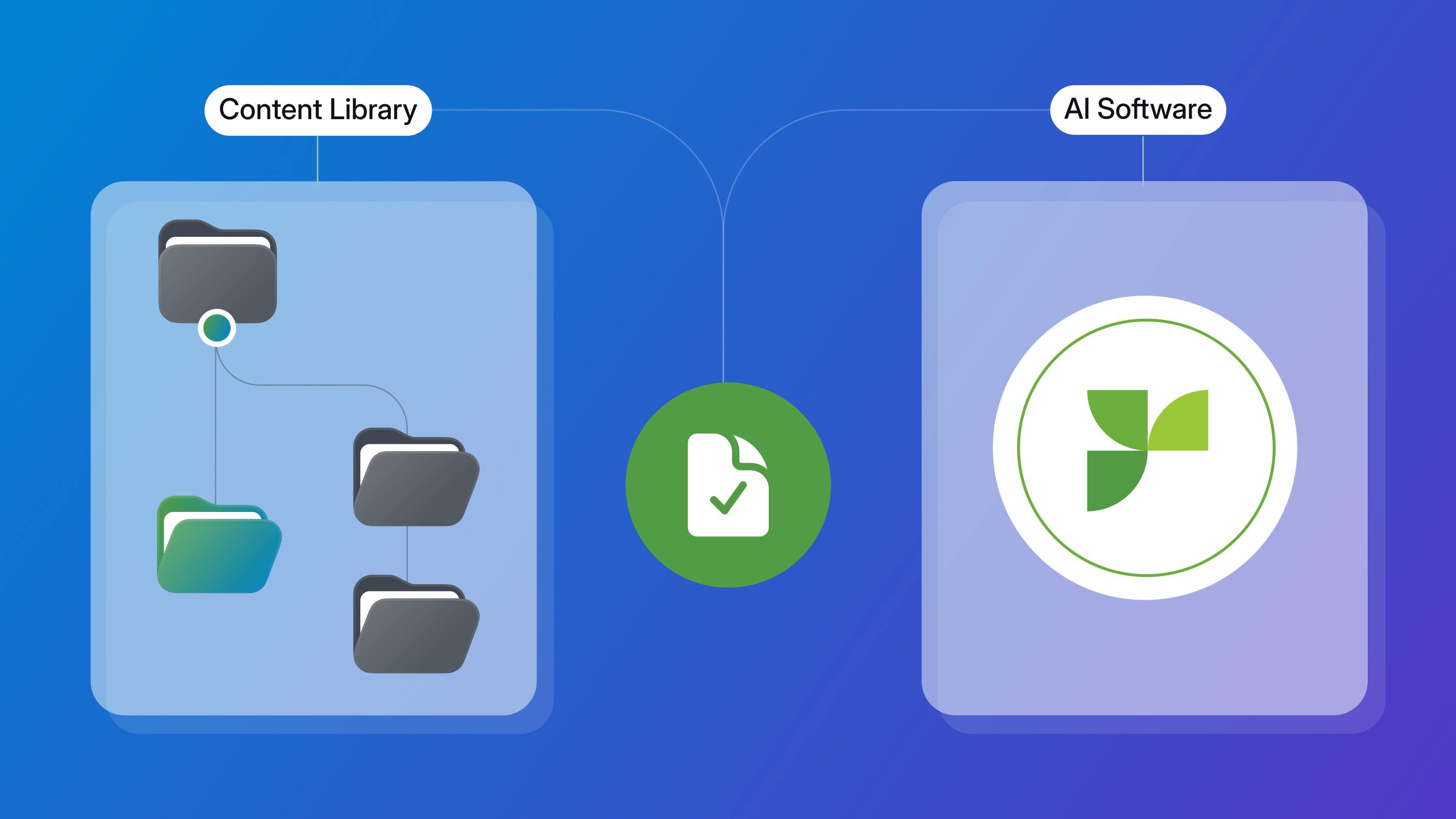When a vendor request lands in your inbox, it can feel like someone just started a countdown timer. Whether you're a procurement manager coordinating across departments or a proposal lead juggling multiple deadlines, having the right RFx tools can mean the difference between an organized, high-quality response and a scramble to the finish line.
RFx tools help teams efficiently manage requests for proposals (RFPs), requests for information (RFIs), and other formal documentation processes. These tools simplify complex workflows and reduce duplication of effort. We’ll walk through how RFx tools are used, what to look for in a platform, and how the right technology can help your team work smarter and respond faster.
How procurement teams use RFx tools
RFx tools are built to support the full lifecycle of procurement and proposal workflows. Let’s examine some of the key use cases.
Bid response management
A good RFx tool centralizes and automates your response process. Teams can pull approved answers from previous submissions, auto-populate standard sections, and reduce the time spent recreating the wheel. Many platforms now include AI-generated suggestions that accelerate first drafts and increase consistency.
Knowledge reuse

A central Content Library allows teams to store and organize past responses in one place. With tagging and smart search, contributors can find the right information quickly. Some tools even surface recommendations based on the question being answered.
Collaboration
RFx tools remove the friction from cross-functional teamwork. Instead of tracking edits across email chains or spreadsheets, contributors can co-edit documents in real time, tag stakeholders with @mentions, and assign tasks. Admin settings also support role-based permissions, making sure the right people see the right sections.
Compliance and risk management
From audit trails to change logs, RFx platforms help maintain visibility and control throughout the drafting and review process. Built-in compliance checks can flag missing data or outdated references, while approval workflows provide documented accountability.
Why today’s RFx requires smarter solutions
The procurement landscape has changed. Request volumes are rising, and expectations around speed and accuracy are growing alongside them. Teams that once relied on spreadsheets and shared drives are now dealing with more complex evaluations, stricter timelines, and a broader range of stakeholders.
To keep pace, organizations need more than a static content repository or manual intake form. They need tools that bring together automation, data, and collaboration — and that integrate with the systems their teams already use. That’s why purpose-built RFx platforms are quickly becoming necessary rather than a nice-to-have.
For more on the strategic implications, see 6 predictions: How Strategic Response Management will impact your 2025 growth.
The tools you need for effective RFx management
When evaluating RFx tools, these capabilities are non-negotiable. Each one plays an important role in streamlining your response process and helping your team operate at a higher level.
Central knowledge base
The foundation of any RFx tool is its Content Library. A well-structured library stores vetted, reusable content with version control to ensure accuracy. Tags make it easy to locate responses by topic, owner, or document type. Regular audits keep content up to date, relevant, and compliant with your internal standards.
AI-enhanced workflow

AI helps reduce the manual lift of creating responses from scratch. Instead, proposal managers can leverage AI to auto-draft answers based on historical responses and contextual cues. Natural language processing improves how the system understands questions, while predictive analytics flag high-priority opportunities for faster action. Learn more about what’s new in Responsive's Spring 2025 platform update.
Collaboration tools
A strong collaboration layer helps teams work together without stepping on each other's toes. Real-time editing, inline comments, and @mentions let contributors communicate and resolve issues within the platform. Task assignments keep projects moving, while integrated messaging cuts down on the need for outside tools.
Data and analytics
Dashboards show how proposals are progressing and where bottlenecks might exist. Teams can track win rates, turnaround times, and usage metrics to continuously improve performance. With visual reporting, decision-makers gain the insights they need to allocate resources and refine strategies.
How RFx tools help your team keep its edge
Modern RFx tools aren’t just about keeping up with demand — they can give your team a measurable edge. When implemented well, these tools lead to better quality responses, faster completion times, and more sustainable operations across teams.
Complete more consistent deliverables

Templates and standardized formats help ensure that all responses follow the same structure and branding. Pre-approved content lowers the risk of errors or inconsistencies, while built-in quality checks catch missing details before submission. TRACE Score™ can also help teams assess content quality with greater accuracy.
Respond faster, without sacrificing quality
With AI-assisted drafting and automated workflows, teams move from intake to submission in less time. Real-time editing and built-in approvals remove common delays, and integration with other tools reduces context switching.
Eliminate knowledge loss and siloed expertise
A shared Content Library means institutional knowledge doesn’t walk out the door when someone changes roles. Transparent documentation of each step helps onboard new team members faster, and regular updates ensure everyone works from the same source of truth.
The role of AI in your RFx tech stack
AI is reshaping the way teams respond to requests. From content generation to decision-making, its impact is being felt at every step of the process.
AI can parse complex questionnaires, suggest best-fit content, and flag gaps in your responses. It can also help teams prioritize opportunities by analyzing past outcomes and current workloads. In tools like the Responsive Platform, AI powers features like document shredding, which automatically extracts requirements and matches them with relevant content or stakeholders. For a broader look at Responsive’s AI capabilities, see Introducing Responsive AI agents.
This level of automation and insight frees up teams to focus on high-value tasks, like strategy and storytelling, instead of repetitive formatting and chasing down answers.
Choosing the right tools
There are many RFx tools on the market, but not all are created equal. When selecting the right one for your team, consider these factors:
- Smart content suggestions that improve the quality of responses
- Strong data protection that meets compliance standards like GDPR and HIPAA
- CRM integrations for smoother workflows with systems like Salesforce
- Custom templates to preserve branding across responses
- Scalability to grow with your team’s needs
- Simple interface that supports fast onboarding and minimal training
- Reliable support that can step in when needed
Look for a platform that can meet your needs today while growing with you tomorrow. The right fit will reduce effort, increase output, and help you win more work.
Future-proof your RFx strategy with Responsive
Responsive combines all of these capabilities into a single, intuitive platform. Built specifically for Strategic Response Management (SRM), Responsive enables procurement and proposal teams to respond with greater speed, consistency, and confidence.
From AI-generated answers to collaborative workflows and visual reporting, every feature is designed to support better responses and stronger results. That’s why organizations across tech, healthcare, and financial services trust Responsive to manage their highest priority RFx workflows.
